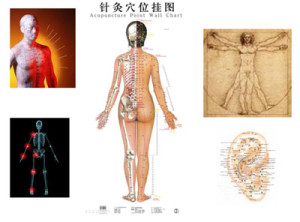Quit Smoking with Laser Therapy
It is FAST, SAFE, painless, and a HIGHLY EFFECTIVE means for smoking cessation. In just one half hour you can be smoke FREE for LIFE. It is a relaxing, sterile and non-invasive procedure performed in a professional atmosphere.
Practitioners have been using therapeutic lasers clinically in Europe, Asia, and North America for over 35 years. The U.S. Food and Drug Administration classifies cold lasers as a "non-significant risk device." We have expert knowledge of the main indications for this method of treatment. We understand Opto-electronics, basics of laser physics, and construction of lasers. Lasers are an ideal modality to safely stimulate acupoints to aid those suffering from nicotine addiction.
 The cold laser produces a beam of light at a high wavelength utilizing low energy. There are specific wavelengths at variable pulse rates applied for varied photobiostimulation. The laser is focused on multiple acupoints. This causes the release of endorphins into the body and causes stress reduction. Endorphins are the body's natural opiates and mood enhancer's. By blocking nicotine receptors in the brain, the endorphin release allows the patient to cease nicotine intake without the withdrawal symptoms.
The cold laser produces a beam of light at a high wavelength utilizing low energy. There are specific wavelengths at variable pulse rates applied for varied photobiostimulation. The laser is focused on multiple acupoints. This causes the release of endorphins into the body and causes stress reduction. Endorphins are the body's natural opiates and mood enhancer's. By blocking nicotine receptors in the brain, the endorphin release allows the patient to cease nicotine intake without the withdrawal symptoms.
Cold lasers are extremely safe because the laser light/radiation has no effect on healthy cells and are not capable of inducing thermal changes in the skin tissue. Laser therapy will quickly help to activate the body's innate communication system which is a more thorough treatment with maximum effectiveness. There are over seventy five trillion cells in a human body which need electrons to communicate with each other. Laser light delivers these required electrons and photons (energy packets with wave and particle properties) directly to the cells and enhances both their ability to communicate with each other and their ability to produce ATP (Adenine Tri Phosphate).
Increased energy to the cells increases cellular metabolism and the production of enzymes that reduce inflammation. Worldwide research, tests and studies have shown conclusively that cold laser light restores balance, energy and nutrient, oxygen permeability to sick cells thus resulting in accelerated healing and regeneration.
This healing is additionally supported by the lasers ability to cause key enzymes and hormones to be secreted. Cold laser therapy can effect electromagnetic and quantum processes which compliments the biochemical model of modern medicine.
Our proprietary cold laser auriculotherapy treatment protocol targets nicotine receptors in the brain: The alpha-7 nicotinic receptor.
 The breadth of the brains inventory of nicotine receptors is large. Receptors are like docking stations allowing molecules to attach to a cell and set a chain of events in motion. Usually each molecule lodges in a specific receptor on a cell. In the case of nicotine, only nicotine molecules attach to many nicotinic receptors. Normally in a tobacco free existence these receptors are not sitting around waiting for nicotine. They are made for acetylcholine, a powerful neurotransmitter associated in the brain with attention, learning, and memory. Nicotine is an impostor for acetylcholine in smokers. Nicotine is a sloppy drug that acts at all these receptors. The receptors adapt to chronic exposure over the long term.
The breadth of the brains inventory of nicotine receptors is large. Receptors are like docking stations allowing molecules to attach to a cell and set a chain of events in motion. Usually each molecule lodges in a specific receptor on a cell. In the case of nicotine, only nicotine molecules attach to many nicotinic receptors. Normally in a tobacco free existence these receptors are not sitting around waiting for nicotine. They are made for acetylcholine, a powerful neurotransmitter associated in the brain with attention, learning, and memory. Nicotine is an impostor for acetylcholine in smokers. Nicotine is a sloppy drug that acts at all these receptors. The receptors adapt to chronic exposure over the long term.
Cigarette smoke assaults lung tissue by introducing highly reactive compounds known variously as free radicals, oxidants or reactive oxygen species. Long-term smoking and the accumulation of free radicals lead to inflammation and cell death, destroying lung tissues. Breathing smoke causes extensive oxidative damage in the lung tissue. The damage caused by exposure to cigarette smoke assaults lung tissue by introducing highly reactive compounds known as free radicals, oxidants or reactive oxygen species. Long term smoking and accumulation of free radicals lead to inflammation of and cell death, destroying lung tissues.
Cigarettes are highly addictive both physically and mentally. The negative physiological and psychological effects are devastating. Addiction to nicotine leads to almost half a million deaths each year. Smoking cigarettes causes lung cancer, cardiovascular disease, chronic obstructive pulmonary disease, which encompasses emphysema and chronic bronchitis and too many other problems to mention here. A smoking habit means you are paying thousands of dollars annually to shorten your life span and severely decrease your quality of life.
Corrective action must be taken immediately.
IF YOU QUIT NOW, YOU WILL FEEL RESULTS IMMEDIATELY!
According to the American Cancer Society, Within 20 minutes of smoking that last cigarette, your body begins a series of improvements that continue for years.
20 minutes after quitting:
• Blood pressure drops to a level close to that before the last cigarette.
• Temperature of hands and feet increase to normal.
8 hours after quitting:
• Carbon monoxide level in blood drops to normal.
24 hours after quitting:
• Chance of heart attack decreases.
2 weeks to 3 months after quitting:
• Circulation improves and lung function increases up to 30 percent.
1 to 9 months after quitting:
• Coughing, sinus congestion, fatigue, and shortness of breath decrease.
1 year after quitting:
• Excess risk of coronary heart disease is half that of a smoker.
5 years after quitting:
• Stroke risk is reduced to that of a nonsmoker's five to 15 years after quitting.
10 years after quitting:
• Lung cancer death rate drops to about half that of a continuing smoker.
15 years after quitting:
• Risk of coronary heart disease is that of a nonsmoker.
